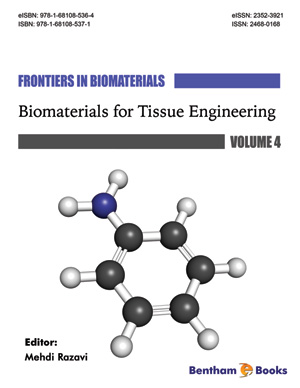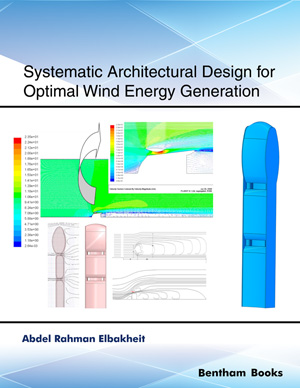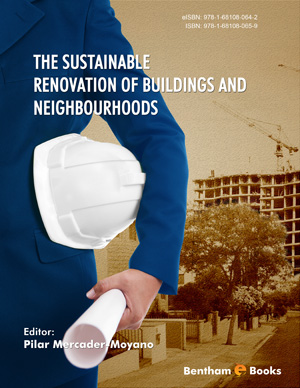Book Volume 4
Synthetic Biopolymers
Page: 1-48 (48)
Author: Mahdis Hesami
DOI: 10.2174/9781681085364117040004
PDF Price: $15
Abstract
The striking role of tissue engineering in saving people’s life is inevitable. The number of patients waiting for an organ donor is increasing every minute. On the other hand, life expectancy has increased which results in a growing demand of scaffold production. The developed technology seeks for materials which target specific cells, proliferate, regenerate the targeted tissue and restores its function. To fulfill this, not only the material type but also the fabrication techniques should be engineered carefully. Among various materials, synthetic polymers have attracted more attention due to their tailorable properties. In this chapter an overview of various synthetic polymers, their degradation, application and their various blends is discussed. The polymeric nanocomposites used as scaffold have been introduced briefly and the future research in the material selection for porous scaffolds has been reviewed.
Polymer-Based Biocomposites
Page: 49-89 (41)
Author: Yasemin Budama-Kilinc, Rabia Cakir-Koc, Ilke Kurt, Kubra Gozutok, Busra Ozkan, Burcu Ozkan and Ibrahim Isildak
DOI: 10.2174/9781681085364117040005
PDF Price: $15
Abstract
Polymer-based biocomposites consist of two or more different polymers that exhibit superior and unique properties when bound together. Currently, a large variety of composites are being produced in order to meet the requirements of numerous biomedical applications. This chapter focuses on synthetic polymer science, which aids in the design of novel materials for biomedical and pharmaceutical applications. In terms of current biomedical technology, many rapid developments in modern medicine have been influenced by the utilization of synthetic polymeric biocomposites (SPBc). This chapter will illuminate the advantages, specific mechanical properties, manufacturing methods, and wide range of applications (i.e. dental, orthopedic and cardiovascular applications, drug delivery systems, artificial skin, artificial cornea, surgical sutures, and biosensors) of SPBc.
Bioactive ACP-Based Polymeric Biocomposites
Page: 90-142 (53)
Author: Drago Skrtic and Joseph M. Antonucci
DOI: 10.2174/9781681085364117040006
PDF Price: $15
Abstract
We have led the research on polymeric dental materials based on amorphous calcium phosphate (ACP) for over two decades. The knowledge gained from systematic structure-composition-property relationship studies of ACP composites yielded a new generation of materials capable of efficiently restoring lost tooth mineral via sustained release of re-mineralizing calcium and phosphate ions (building blocks of both enamel and dentin). Our work has also contributed to a better understanding on how different monomer systems yield unique matrix structures and filler/matrix interactions that affect the critical properties of ACP composites and their overall performance. In this Chapter, we describe ACP filler, polymer and composite fabrication and the sequential physicochemical, mechanical and biological evaluation of ACP composites intended for different dental applications. We also discuss introducing an antimicrobial function in the formulation of ACP composites as a way of expanding their potential application beyond dentistry into area of regenerative hard tissue medicine.
Hydrogels: Types, Structure, Properties, and Applications
Page: 143-169 (27)
Author: Amirsalar Khandan, Hossein Jazayeri, Mina D. Fahmy and Mehdi Razavi
DOI: 10.2174/9781681085364117040007
PDF Price: $15
Abstract
Hydrogels are one of the important biomaterials for tissue engineering applications. The hydrogel scaffolds’ state-of-the-art properties for clinical applications are subject to on-going researches. Hydrogels, such as hybrid and protein-based ones, contain protein domains. Hydrogels show unique advantages compared to other polymeric materials; which made them applicable as periodontal materials and drug carriers, as well as bone matrices. The first description of its use was developed by a Scottish chemist, Thomas Graham, as a solid, jelly-like material that can have different physical and mechanical properties. Gels are defined as a substantially dilute crosslinked system, which doesn’t have flow in the steady-state. Gels can be typically characterized as liquids, while they behave like solids due to a 3D cross-linked network within the liquid. The gels’ IUPAC definition classifies them as a non-fluid polymer network that is expanded throughout its whole volume by a fluid. Thus, this chapter aims to describe the composition, synthesis techniques, and applications of hydrogel scaffolds for biomedical approaches.
Metallic Scaffolds
Page: 170-194 (25)
Author: Mehdi Razavi
DOI: 10.2174/9781681085364117040008
PDF Price: $15
Abstract
The focus of hard tissue engineering is mostly on osteo and dental clinical applications. Whereas hard tissues are usually under the load, biomaterials used for this purpose must have sufficient mechanical properties as well as corrosion resistance, enough wear resistance and biocompatibility. A lot of amazing researches are in process throughout the world in an attempt to develop new scaffolds for tissue engineering. Today, most research efforts are made to develop scaffolds through using the natural and synthetic polymers for soft tissue engineering; however, metallic scaffolds have also been the interest of in vitro and in vivo research for hard tissue engineering. With regard to the excellent mechanical behavior of metals rather than polymers and ceramics, metallic scaffolds have been preferred for bone tissue engineering applications in which the tissue is under the load. Up to now, numerous biocompatible metallic biomaterials have been utilized as implants in dental and orthopaedic surgery in order to repair damaged bones and to provide support for bone healing. In this article, efforts have been made to review the applications of titanium, tantalum, nitinol and magnesium in scaffolds.
Gradient Fabrication
Page: 195-215 (21)
Author: Nasim Kiaie and Mehdi Razavi
DOI: 10.2174/9781681085364117040009
PDF Price: $15
Abstract
The importance of applying the (physical, mechanical or chemical) gradient for the development of porous scaffolds is undeniable in tissue engineering. Gradient scaffolds enable us to engineer heterogeneous interfacial tissues, to mimic the natural microenvironment of cells, Extra Cellular Matrix (ECM) alignment and clustering the cells. Therefore, they can properly realize the biomimetic approach. Such scaffolds are suitable to create functional tissues through the incorporation of physical and chemical signal gradients. Additionally, using the gradient structures, high throughput screening of cell-scaffold interactions becomes possible for optimization of scaffold design parameters and prevention of errors during the experiments. Thus, in this chapter, we aim to first introduce different types of gradients and then discuss the production techniques of the gradient scaffolds.
In Vivo and In Vitro Experiments for the Evaluation of Porous Biomaterials
Page: 216-243 (28)
Author: Rabia Cakir-Koc, Yasemin Budama-Kilinc, Burak Ozdemir, Zeynep Kaya, Mehtap Sert and Neslinur Ozcelik
DOI: 10.2174/9781681085364117040010
PDF Price: $15
Abstract
Biomaterials used for medical application may cause some biological responses when applied to the body. Hence, biomaterials must be tested by various in vivo and in vitro test systems, before using on humans, according to different standardizations like ISO 19033. These tests are made to determine the biocompatibility of biomaterials and indicate their potential toxicity, irritation, and non-hemocompatibility. Furthermore, biomaterials must have similar mechanical properties as natural tissue has. For this reason, biomaterials are investigated in terms of mechanical properties such as tensile strength, elasticity and plastic deformation, viscoelasticity, failure, fracture, fatigue, and wear. This chapter seeks to elucidate certain principles and procedures of in vivo and in vitro test methods that determine biocompatibility and mechanical properties of biomaterials.
Immune Aspects of Scaffold Design
Page: 244-255 (12)
Author: Nasrin Mokhtari, Hamidreza Mokhtari and Mehdi Razavi
DOI: 10.2174/9781681085364117040011
PDF Price: $15
Abstract
Long-term survival of scaffolds depends on having no detrimental immune response. Designing biomaterials that are able to modulate host responses and thus support the healing process is essential for tissue remodeling. In depth understanding of immune response to the biomaterials and their transplanted cells is important since the interaction between host response and transplanted cells demonstrates the biocompatibility of the implanted scaffold. In this chapter, we mainly aim to focus on innate and adaptive immune response and wound healings processes. In detail we discuss about variables that effect on the immune responses and the current strategies for modulating.
Future Perspectives of Porous Scaffolds
Page: 256-273 (18)
Author: Farnaz Naghizadeh
DOI: 10.2174/9781681085364117040012
PDF Price: $15
Abstract
In the present chapter, the future perspective and the current challenges of porous scaffolds design will be described. In addition, the state of the art in this field and what we can expect from future generations of porous scaffolds will be discussed. The difficulties in bridging the gap between research and clinical practice have also been outlined.
Introduction
This volume reviews the published knowledge about bioactive composites, protein scaffolds and hydrogels. Chapters also detail the production parameters and clarify the evaluation protocol for analysis or testing and scaffolding biomaterials. The volume concludes with a summary of applications of porous scaffold in medicine. Each chapter links basic scientific and engineering concepts to practical applications for the benefit of the reader. The text offers a wealth of information that will be of use to all students, bioengineers, materials scientists, chemists, physicians and surgeons concerned with the properties, performance, and the application of tissue engineering scaffolds in clinical settings.




















